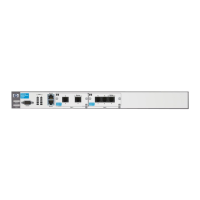1-6
Overview
Using This Guide
■ Square brackets ( [ ] ) are used in two ways:
• They enclose a set of options. When entering the command, you select
one option from the set. For example, in the second command shown
above, you would enter any or host <A.B.C.D> or <A.B.C.D>
<wildcard bits>.
• They indicate an optional element. You can include the optional
element in the command, but it is not required.
■ Angle brackets within square brackets ( [ < > ] ) indicate that you may
optionally add the information specific to your router or WAN to the
command. For example, in the first command above, you can either
replace <listname> with the name of a specific ACL or omit the name to
view all ACLs.
■ Braces ( { } ) indicate an embedded option.
■ Bold typeface is used for simulations of actual keys. For example, the “Y”
key appears as
y.
■ Italics indicate an element that you must replace with information that is
specific to your router or WAN.
When examples of commands are included in this guide, the guide notes the
context required for the command and displays the context as it appears in
the CLI.
CLI Prompt
When you first boot up your ProCurve Secure Router, the CLI prompt indicates
the router model:
ProCurveSR7102dl>
ProCurveSR7203dl>
For simplicity, throughout this manual the CLI prompt is shown as:
ProCurve>
You can change the name displayed at the prompt of your router by changing
the router’s hostname. See “hostname Command” on page 1-61 for
instructions.

